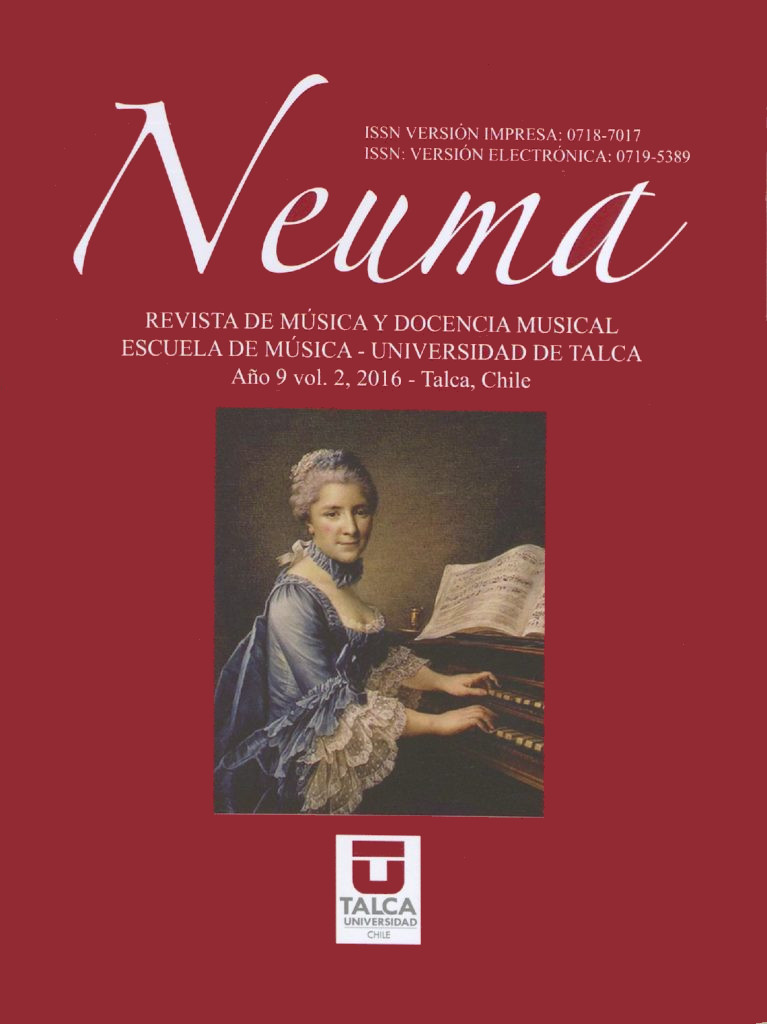Abstract
The teaching specialist of music, as responsible for the student’s musical development should be aware about the importance that weighs on his shoulders when he is looking for strategies and activities that allows kids to reach the optimal development of their musical skills. This ability or Musical intelligence is part of the intelligences present in every human being, according to the proposed by the psychologist Howard Gardner in its Theory of the Multiple Intelligences. This way, in the stimulation of the musical intelligence, it is essential that the teacher has aesthetic taste to inculcate in its students the desire to be attentive and sensitive listeners to perceive the timbre elements, tunning, rhythm and melody that escape to the comprehension of any amateur ear, to this is essential to listen, beyond the esthetic stick. As Casas affirm “listening is to enter into the world of the composer world, is to recreate and to have the ability to travel through time”.
References
Alisina, Pep. (1999). Educación Musical. Barcelona: Editorial Grao.
Armnstrong, Thomas. (2006). Las Inteligencias Múltiples en el aula: guía práctica para educadores. Barcelona: Editorial Paidós Iberica. 2ª. Edición.
Casas, María Victoria (2004). Musicoterapia y Composición. Madrid: Pélade
Diccionario Enciclopédico Universal (2001). Tomo 18. Barcelona. España: Rombo.
Diccionario de Pedagogía y Psicología (2013). España: Grupo Océano, S.A.
Esquivias, Maria Teresa (2004). Creatividad: definiciones, antecedentes, aportaciones. Revista digital universitaria. 5/1.
Gardner, Howard (1993). Las inteligencias Múltiples. La teoría en la práctica. Barcelona: Editorial Paidós.
Guilford, Joy (1983). Creatividad y Educación. España: Ediciones Paidos.
Gutiérrez, Germán (1991) “Joy Paul Guilford (1897-1987)”. Revista Latinoamericana de Psicología. 23/ 001.
Handel, Stephen (1989). Listening: An introduction to the Perception of auditory Events. Esmerald Group Publishing Limited. Edited by Simon Grondin. 2da. Ed.
Hernández, Antonio (1995). Métodos y autores para la Educación Musical. Taller de animación musical y juegos. México, D.F: Libros del rincón
Jiménez, Carmen (2000). La atención a la diversidad a examen: La educación de los más capaces en el sistema escolar. Tesis de Grado Publicada. Universidad de Nacional de Educación a Distancia. Madrid.
Macar, Françoise (1980). Le temps. Perspectives psychophysiologiques. Mardaga editor. Bruselas: Mardaga
Malbrán, Silvia (2013). Ritmo musical y sincronía. Un programa de investigación aplicada con proyecciones psicopedagógicas. Instituto de Investigación Musicológica “Carlos Vega”. Buenos Aires: Editorial de la Universidad Católica Argentina.
Rodríguez Casas, Gerardo (2001). Integración Humana y Epistemología. Madrid: Editorial Paidós.
Saavedra, Rafael (1999). Manual de Formas Musicales. Caracas: Fundación Bigot.
Viasus, Diana y José Lemus (2002). Enciclopedia para la Educación. Bogotá: Rezza Editores, S.A.

This work is licensed under a Creative Commons Attribution-NonCommercial 4.0 International License.
Copyright (c) 2016 Neuma (Talca)


